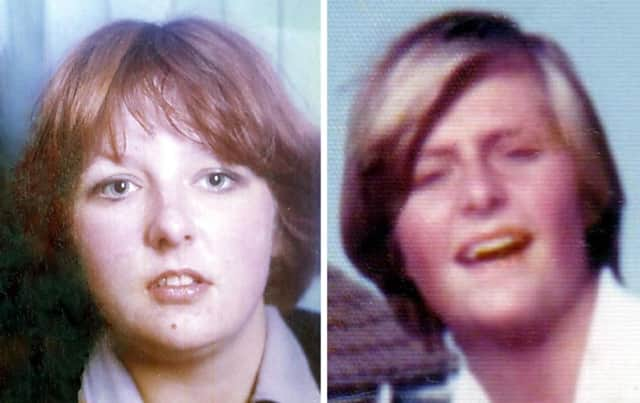World’s End trial: Accused’s DNA ‘on ligature’


A sample taken from clothing around the neck of Christine Eadie was analysed by forensic scientist Andrew McDonald in May this year and a low-level mixed DNA profile was found, jurors were told.
He said that in his opinion he was unable to exclude Angus Sinclair and Gordon Hamilton as “possible contributors” to the profile.
Advertisement
Hide AdAdvertisement
Hide AdSinclair, 69, is on trial at the High Court in Livingston, where he denies raping and murdering Miss Eadie and her friend Helen Scott, who were last seen at Edinburgh’s World’s End pub on 15 October, 1977.
Miss Eadie’s body was found the following afternoon at Gosford Bay, Aberlady, while Helen’s body was discovered a few hours later in a wheat field near Haddington, both in East Lothian.
Sinclair has submitted three special defences of incrimination – blaming his brother-in-law Gordon Hamilton, now dead; alibi – saying he was fishing on the banks of the Firth of Forth near Cockenzie power station at the time; and consent to sexual intercourse.
During the tenth day of the trial, the court heard how DNA samples from underwear found next to Helen’s body were also analysed, with a mixed profile detected.
In a report prepared for the court, Mr McDonald said the chance of DNA from one of the samples coming from another person unrelated to Sinclair was in excess of one in a billion.
DNA found on other samples tested – taken from a ligature made of bra and tights around Miss Eadie’s neck and a ligature of a belt and tights used on Miss Scott – matched that of Hamilton, he said.
The jury was told there was a one-in-a-billion chance that the DNA could have come from anyone else other than Hamilton.
Mr McDonald, who told the court he worked for the Cellmark laboratory in England, said a “MiniFiler” technique was used to analyse DNA samples that could have degraded over time.
Advertisement
Hide AdAdvertisement
Hide AdDuring questioning from Lord Advocate Frank Mulholland, prosecuting, Mr McDonald said that his analysis found “what you would expect from a mix” of Sinclair and Hamilton’s DNA on a bra round Christine’s neck.
He said the strongest DNA components matched parts of Hamilton’s profile and the “slightly weaker” components matched Sinclair.
Under cross-examination from Ian Duguid QC, defending, he was asked whether sexual activity could have led to DNA samples being left. Mr McDonald said that would be correct.
The trial, before judge Lord Matthews, continues.
SEE ALSO